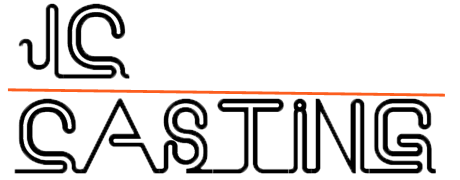HISTORY OF INVESTMENT CASTING
What Is Investment Casting?
Investment casting, often referred to as precision casting or lost-wax casting, is the process of molding a ceramic mold from a wax pattern. A wax design is created in the shape of the object to be cast. This pattern is covered with a refractory ceramic material. The hardened ceramic shell is then inverted and heated until the wax melts and drains out. Metal is poured into the mold and allowed to cool afterward. The spent mold is broken off of the metal casting.
The term “investment casting” derives from the technique of “investing” (surrounding) a pattern with refractory materials during the process. Because the castings produced by this method are detailed and have good as-cast surface finishes. It is frequently used in preference to other molding techniques. They can also be cast using thin walls and complex internal passageways, unlike sand casting. Investment casting does not require a draft because it does not involve sand casting.
The Backgroud of Investment History Casting
The fundamental source of this technology dates back at least 4,000 years to the region known as Mesopotamia, where it was first discovered. Natural beeswax was used for patterns, clay for molds, and manually operated bellows to fuel furnaces by ancient artisans. The cire perdue or “lost wax” casting technique was utilized by artists and sculptors in ancient Egypt and Mesopotamia. The Han Dynasty in China. The Benin civilization in Africa created their intricately detailed artwork of copper, bronze, and gold.
The Aztec goldsmiths utilized the lost-wax method to create much of their stunning jewelry in Pre-Columbian Mexico. Unfortunately, many pieces of this work were melted down by the conquistadors to enrich the Spanish treasury, leaving us with only a few examples.
The History of Investment Casting During World War II
The high material requirements that occurred during World War II necessitated the continued development of investment casting. To keep up with rising design standards, new weapons of war needed innovative manufacturing techniques.
New aircraft engines required investment cast components that could satisfy particular design criteria. High-performance aircraft and their crews require precise alloy composition and physical dimensions to survive. Precision investment casting was utilized in numerous similar applications. It helped advance the technology and popularity of this method.
Investment casting is quickly becoming an important part of the manufacturing sector. Owing to the demand for steel and alloy machine elements able to operate with smaller tolerances. Investment casting has long been a reliable technique for creating metallic sculptures from artists’ molds. And it continues to be so.
Steel casting also became popular in the modern world in the late 1800s, when dentists utilized it for crowns and inser treatments. This usage grew dramatically during the 1940s, as there was a tremendous need for precise net shape manufacturing for special things. It could not be formed by other techniques.
Metal components produced by investment casting, which is also known as investment molding, have been used in a wide range of commercial and industrial applications. Because it can create metal components in an exact and reproducible manner. It has become increasingly popular among businesses that need to create many identical parts at high rates.
Investment Casting Today
Today, investment casting provides you the ability to create practical components by molding features that are then used as castings. This allows you to achieve a near-net shape degree of precision for anything from door lock hardware to gas turbine parts and everything in between. This method lets you to test out different methods to see whether they work how you want them to
JC Casting is an industrial casting business that specializes in assisting our customers to save money through improved and more efficient supply chain solutions. We take pleasure in our capacity to address difficulties and make your life simpler. Contact us today, and tell us how we can help you and your company!
